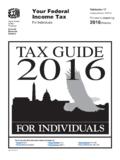Transcription of Postmortem Examination - Office of Justice Programs
1 CHAPTER 3 Postmortem Examination Thomas T. Noguchi, INTRODUCTION Regardless of the suspected cause of death, a medical examiner or coroner's Postmortem Examination should always be thorough and comprehensive, for deaths which come under the jurisdiction of this Office are often ex-tremely complex, dealing as they do mostly with instances of sudden and unexpected de-mise. The Postmortem Examination should be approached with a certain degree of suspicion of possible but hidden etiological fac-tors. The true cause of death may be masked by the obvious findings. In the simpler , the specific cause of death may be accurately determined by any competent pathologist and even by an alert non pathologist physician. In more complex cases, however, those without the trained or ingrained sense of suspicion of a forensic path-ologist may be misled by the apparent and may seek no further information beyond the obvious.
2 The average physician is often either unaware of or has a rather lax attitUde toward the potential medicolegal ramifications and significance of the autopsy report in coroner's cases. As an example, a history of heart attack should not automatically lead to the conclu-sion that a sudden death was due to heart disease. Drug abuse or misuse may be highly unlikely, but adverse reaction to therapeutic drugs is a possibility which should not be over-looked, especially in persons under intensive drug treatment of medical conditions. A nUln-bel' of deaths due to drugs have probably been missed because of bias induced by the medical history of the deceased. Deaths involving psychoactive drugs may be divided into three categories, each of which calls for a thorough Postmortem investigation: 1. Death due to the direct toxic effect of a drug. 2. Death as a result of secondary complica-15 tions such as hepatitis and other infections due to use of contaminated needles in the administration of a drug.
3 3. Death, usually violent, from situations created by a person who, under the influence of a high but nonlethal dose of a drug, acts in a manner incompatible with life, exposing himself to life-risking situations, such as run-ning in front of a moving vehicle, jumping from a high place, or aggressively inviting vio-lence from others) Hospital Versus Forensic Postmortt)m Examination The primary purpose of a Postmortem Examination conducted in a hospital is to con-firm a known or suspected diagnosis of the disease which caused the death of the patient. In addition, the hospital Postmortem may provide knowledge concerning the tissue dam-age caused by the disease. Emphasis is on the. detailed study of specific internal organ or organs involved in the disease process; only a cursory external Examination is conducted. The forensic pathologist is not only inter-ested in the direct cause of death but also in trying to reconstruct the circumstances and events which led to the death.
4 Whatever the immediate cause of death, he must also ascer-tain whether the death was an accident, a suicide, or a homicide. Thorough external Examination of the clothing worn by the deceased at the time of death and study of the deceased's state of mind just prior to death are as important as the Examination of the internal organs. A complete and thorough medical examiner/coroner's post-mortem Examination must include: lThese parallel the distinctions represented in categories of Code 3 of the UCI form, , drug in-duced and drug related (see appendix A), If you have issues viewing or accessing this file contact us at NOGUCHI 1. Detailed study of the scene of death, noting any signs of disorder, position of the deceased, presence of any possible evidential material, such as pills and prescription bottles in suspected drug deaths (see chapter 2, "On-sitt' Investigation ").
5 2. Precise and detailed study of the type and extent of any morphological damage or trauma, including microscopic examinations. 3. Determination of the diref't cause of the injury-disease, physical force, chemical agents, etc. 4. Followup toxicological, biochemical, microbiological, and other laboratory tests on selected tissues and body fluids as indicated by gross findings. 5. Analysis of information obtained from family and friends pertaining to the attitudes and lifestyle of the deceased. The forensic pathologist has the training to recognize the significance of the various infor-mation obtained, to put it together like a jig-saw puzzle, interpret the findings, and come up with a reasonable reconstruction of the circumstances and events which led to the death of the individual. Chain of Evidence In the handling of any medical examiner/ coroner's case, the proper identification of all materials connected with each case is a MUST.
6 All articles of clothing, contents of pockets, all tissues, and other biological materials re-moved for testing ( , blood), and all records and documents must be properly and legibly identified at the time of removal and exami-nation. Much grief and problems can be avoided when this rule is strictly adhered to (see also chapter 2, "Onsite Investigation"). Docli mentati on Just as important as a thorough post-mortem Examination is proper documentation of the findings. The written documentation may be in the form of "check and fill-in" sheets supplemented with short, simple nan'a-tive reports and picto-charts of body sections and organs showing pertinent findings and dimensiol)s for easy reference. Each document should be identified with: 1. The official name of the medical exami-ner or coroner's Office 2. The name of the deceased 3. The case number 4. The date and time 5.
7 The name of the medical examiner Finally, each document should be signed by the medical examiner. In addition to the written reports and charts, photo-documentation is absolutely essential. Photographs should be taken of all pertinent findings, clothing, external body surfaces, including identity photo of the de-ceased's facial features as well as internal body organs. Color photographs are preferable to black and white. Needle marks and bruises in black-and-white photographs may appear as ambiguous dark areas on the skin which can be misinterpreted. With color photographs fresh injuries can be readily distinguished from old Each photograph should have incorporated within the picture the following clearly visible information: the official name of the medical examiner or coroner's Office , the case number, the date and time, a scale (which can be a simple ruler) to indicate dimensions, and the names of the photographer and medical ex-aminer.
8 Finally, in approaching Postmortem pro-cedures, always keep in mind Ont, cardinal rule of forensic Postmortem Examination : Do not probe, enlarge, cut into , incise, or otherwise distort or destroy any wound, including needle pUllcture site, until it has been com-pletely measured, charted, and photographed. OUTLINE OF PROCEDURE 1. Review of Reports The first step in the handling of a case is the complete review of all available documents pertaining to the death, including reports from the police, hospital, mortuary, or coro-ner's at-scene investigation. Initial and d~ e all reports read. 2. Clothing ;. Examine clothing for damage and unusual stains. When injury to the deceased is evident, 2 Editor's note: Chapter 2 mentions the fact that not all jurisdictions accept color. ------~~-~---~----, Postmortem EXMHNATION 17 pay careful attention to the relationship of any damage to the clothing and the pattern of injury, the location of stains from blood or other body fluids.
9 Include as part of the post-mortem protocol: a. Description of the clothing: type, color, size, manufacturer's labeJ, cleaner's marks, etc. b. Description of pattern, shape, and loca-tion of stains, tears, bullet holes, powder burns, knife holes, etc. c. Description of shoes, any scuffing or unusual markings. Preserve dirt, glass, paint, spent bullets caught in clothing, or other foreign materials found on the clothing. Photo-document all significant findings. 3. General External Examination Unclothe the body. Photograph the un-washed body. Examine the body in a system-atic manner starting from the top of the head and going to the tip of the toes. Note the location and extent of any injuries. 4. Detailed Examination of Skin Closely examine the skin surface of the entire body with a hand or head visor type 6-10 x magnifying lens. Inspect the unwashed body for staining by foreign dyes or com-monly identifiable smears such as lipsticks and lip prints.
10 Photo-document findings. Wash the body and inspect it for scars, ecchymoses, and abrasions as well as gross trauma. Critically examine the skin surface for possible hidden needle marks. Palpate the body surface along with the visual inspection and properly document all significant findings. 5. Examination of !-lead and Facial Structures a. Head: Chart, measure, describe, and photo-document all trauma. b. Face: Note color for possible cyanosis or other indications of poisoning: Take identification photograph of facial fea-tures. c. Eyes: Describe and chart trauma. Look for petechial hemorrhages of the con-junctiva. Check both upper and lower lids. Use ophthalmoscope and critically examine the fundus and the vitreous fluid. Note degree of turbidity of the vitreous fluid. Aspirate the fluid and place in test tube for toxicological and biochemical analyses. The degree of turbidity of the vitreous fluid can be a clue to the Postmortem interval, and in drug-induced deaths, the conjunctiva of the eye may show pete-chial hemorrhages.














